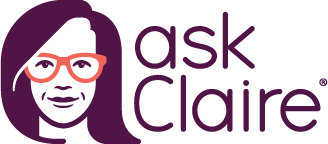Medicare Prescription Drug Costs
One of the most important considerations when looking for Medicare prescription drug coverage is to understand your costs. A drug plan doesn’t do you any good if you can’t afford the drugs you need, after all. This is why it can be helpful to understand how Medicare drug costs work, even though it can be a bit confusing. (Don’t worry, we’ll try to simply it for you!)
Medicare benefits and costs reset at the beginning of the calendar year, meaning that you start with a blank slate on January 1 each year. As you fill prescriptions each year, you move through four phases of coverage, which affects how much you pay for your drugs.
Phase 1: Deductible
In Phase 1, Medicare beneficiaries are required to pay 100% of the costs of their drugs up to a maximum deductible, which is $505 in 2023. Once the beneficiary has reached the deductible, they then move onto the next phase.
For example, if a plan has a $505 deductible, but each month, the beneficiaries drugs only retail for $101, it will take five months for them to hit their deductible limit (5 months x $101 = $505). If, however, the retail for the prescriptions is $505 per month, they will hit their deductible in January, moving them into the next phase immediately after that.
Note: Not all plans have deductibles, meaning that some plans effectively start you out in Phase 2. You can talk with a licensed Medicare agent to learn more about the specifics of any plan you are considering.
Phase 2: Initial Coverage
In Phase 2, beneficiaries pay whatever co-payment or co-insurance amounts are defined by their plan. These amounts will vary, depending on the plan and the tier on which the drugs are found.
For example, a plan may have one statin on Tier 1, with a $5 copay and another statin on Tier 2 with a $20 copay. The amount that you pay will be dependent on which statin you are prescribed and which tier it is on, which will vary from plan to plan.
In 2023, the Initial Coverage Limit is $4,660, meaning that you will move into the next phase once you hit that amount.
Phase 3: Coverage Gap
Once you hit $4,660 of coverage in 2023, you enter what is known as the coverage gap, where you will pay (no more than) 25% of the costs of your prescription drugs. (Previously, this was also known as the “donut hole,” though recent rules have lessened the impact of reaching the coverage gap on beneficiaries).
For example, if you are on a prescription drug that retails for $400 but that is on Tier 3 with a $20 copay on your plan, you will pay $20 during Phase 2 (the Initial Coverage period) and $100 (25% x $400 = $100) once you hit the coverage gap.
In 2023, the maximum out-of-pocket (MOOP) threshold for prescription drug plans is $7,400, after which you will enter the final phase of drug coverage.
Interestingly, while you will pay no more than 25% of the costs of drugs while in the coverage gap, how it affects your out-of-pocket (OOP) costs will vary depending on whether it is a generic or brand name drug.
Generic Drugs in the Coverage Gap
Generic drugs are pretty simple to understand in the coverage gap. Here, Medicare will pay 75% of the costs of the drug and you will pay the remaining 25%. The amount that you pay will count toward your total out-of-pocket (OOP) costs.
Brand Name Drugs in the Coverage Gap
Brand name drugs are a bit more complicated. Here, Medicare will pay only 5% of the cost of the drug, the manufacturer will pay another 70% (or more), and you are left with the remainder, which is 25% or less, depending on how much the manufacturer pays. Most importantly, the amount that you pay as well as the amount that the drug manufacturer pays are both counted toward your maximum out-of-pocket (MOOP) costs, meaning that you will move out of the coverage gap even faster.
Phase 4: Catastrophic Phase
Once you’ve hit the maximum out-of-pocket limit (MOOP), which is $7,400 in 2023, you’ll enter the final phase of Medicare Part D drug coverage, known as the catastrophic phase. (Don’t worry, it isn’t a bad thing, despite how it sounds.) During the catastrophic phase, you pay the greater of 5% for your drugs or $4.15 for generic drugs and $10.35 for brand name drugs.
For example, if you are on a brand name drug that retails for $200, you will only pay $10 for the prescription (5% x $200 = $10, which is less than the $10.35 copay). Or, if you’re on a generic drug that retails for $100, you’ll pay $5 (5% x $100 = $5, which is more than the $4.15 copay). These amounts will continue until the benefit reset on January 1 of the following year.



